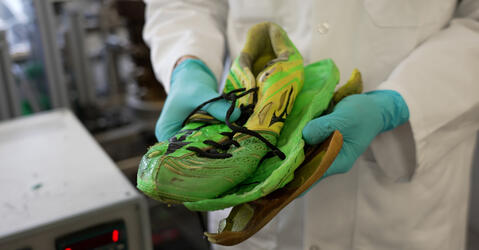You are here
Matter
The metabolism of astronauts, the behaviour of plants, the reactions of living beings to radiation and of foams to weightlessness… The International Space Station does not only observe Space, as evidenced by the following four experiments.
Article
03.26.2025
How to measure the dislocation of ice floes, the immense expanses of ice floating in polar seas? Easy! Create a model of the ice pack, find the best way to shake it, and watch as it breaks under the effect of waves.
Slideshow
03.19.2025
Based in Namibia, the H.E.S.S. telescope array monitors the showers of particles produced when the highest-energy cosmic rays ever observed in the Universe impact the Earth's atmosphere.
Article
01.29.2025
Light, soft, resistant, deformable, and sometimes tacky, knitted fabric is not just an everyday object, it is also a metamaterial whose extraordinary properties are of great interest to physicists.
Article
01.14.2025








